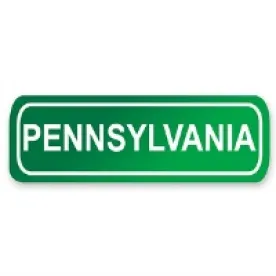Philadelphia’s newest Public Health Emergency Leave law went into effect on March 29, 2021. Unlike the prior iteration of the law that sunset on December 31, 2020, this law will stay in effect “for the duration of the COVID-19 pandemic.”
Applicability
The law applies to both union and nonunion private-sector employees of employers with 50 or more employees. To qualify for leave under this law, an employee must be employed for 90 days or more and (i) work within Philadelphia, (ii) normally work for an employer within Philadelphia “but is currently teleworking from any other location as a result of COVID-19,” or (iii) work for an “employer from multiple locations or from mobile locations provided that 51% or more of such employee’s work time is spent within the City of Philadelphia.”
Timing
The law provides that the “leave shall be provided to employees immediately without any waiting period or accrual requirements.”
Reasons for Leave
Employers must provide up to 80 hours of paid sick leave to employees at their regular rate of pay (including the same benefits) “for specific COVID-19 reasons, including:
-
Care for self or family member showing symptoms of COVID-19.
-
Care for self or family member exposed to COVID-19 in order to self-isolate.
-
Childcare or school closure.
-
In order to receive a vaccine or recover from injury, disability or illness related to vaccination.”
Leave Allotment
The law requires employers to provide 80 hours of leave to “employees who work 40 hours or more per week … unless [an] employer designates a higher limit.” The law also requires employers to provide pandemic-related leave to workers “who work fewer than 40 hours in a week.” For these workers, “leave shall be provided in an amount equal to the amount of time the [e]mployee is otherwise scheduled to work or actually works on average in a 14-day period, whichever is greater and unless the employer designates a higher limit.” For those employees whose schedule varies from week to week, the employer shall calculate “the average number of daily hours that the employee was scheduled over the past 90 … days of work, including hours for which the employee took leave of any type, multiplied by [14].”
Notice Requirements: Employee
The burden is on employees to request public health emergency leave from their employers. According to the law, employees must “provide notice to their employer of the need for 2021 public health emergency leave as practicable and as soon as feasible, but only when the need … is foreseeable.” This paid sick leave, however, must be provided outside of and before employees use their existing accrued paid time off. Moreover, an employer is only allowed “to request that an employee submit a self-certified statement … asserting that leave was used according to the purposes” permitted by the law.
Notice Requirements: Employers
Employers must provide notice to employees of the public health emergency leave within 15 days of the law being adopted, i.e., by April 13, 2021. A model poster is available on the City of Philadelphia’s website. If a worker “does not maintain a physical workspace, or an employee teleworks or performs work through a web-based platform,” the employer may provide the notice through “electronic communication or a conspicuous posting in the web-based platform.”
Effect on Existing Leave Policies
Employers are not required to provide additional paid sick leave under this law if they already have existing leave policies that provide 160 hours “or more of paid time off in 2021 that is not specifically designated as sick leave, but can be used for the same purposes and under all of the same conditions” as required by this law. [Emphasis added.] Employers are not required to provide additional leave for teleworking employees if the employer’s existing policy provides teleworking employees at least 80 hours “of paid leave in 2021 [that] can be used for the same purposes” as the reasons set forth in this law.
Employers that adopted leave policies on or after March 6, 2020, that offer employees “additional paid time specifically for use during the COVID-19 pandemic in 2021 … may substitute leave under such employer polic[ies] for the leave required under this [law] to the extent they coincide.” Employers are “required to provide additional 2021 public health emergency leave … only to the extent that the [law’s] requirements … exceed the requirements of [their] own specific COVID-19 pandemic paid leave polic[ies] otherwise available to a particular employee on or after January 1, 2021.” That law also states that “[n]o employer required to provide leave under this law may reduce the amount of any paid leave an employee entitled to 2021 public health emergency leave was otherwise entitled to use or accrue under such employer’s existing policies as of March 1, 2021.”
Interaction with Federal and State Leave Laws
“To the extent that federal or state laws require employers to provide paid leave or paid sick time related to COVID-19, employers may substitute leave under the federal or state law for [their] obligations” under the Philadelphia law “to the extent they coincide and the relevant federal or state law permits such concurrent use of paid leave.” But, if the requirements of the new city law exceed the leave provisions under federal or state leave laws, “[e]mployers shall provide additional 2021 public health emergency leave.” According to Philadelphia’s Department of Labor, “[e]mployers may be eligible to receive a federal tax credit when they provide emergency paid sick leave.”
Regulations
It is expected that Philadelphia will release regulations outlining how the law will be applied and hopefully provide clarity on the many questions left unanswered by this law.





 />i
/>i

